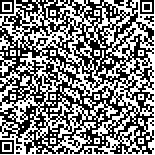| 摘要: |
| 针对传统方法缺少对乘客的实际活
动轨迹和出行需求进行量化的难点,研究基
于乘客实际站外全程轨迹,提出了通过测度
城市轨道交通站点服务的供需失衡程度来评
价线网建设时序的决策支持模型。模型以手
机信令数据识别出的乘客进站前地面停留地
作为站点的实际服务范围,以等效路阻模型
测算站点的理论服务范围,并将二者的差异
作为供需不匹配的区域。建立总溢出距离和信
息熵两个指标评价体系,用以评价建设时序。
通过杭州市2号线西段建成前后的手机信令
数据对模型进行了检验。检验表明,模型能较
好度量供需不匹配程度,评估建设需求的迫
切性,能支持杭州城市轨道交通线网建设时
序预测。本研究采用了集成大数据与传统交
通模型框架,提出了具有预测性和实证性的
城市轨道交通线网建设时序决策支持模型。 |
| 关键词: 城市轨道交通 建设时序 手机信令数据 等效路阻模型 信息熵 |
| DOI:10.13791/j.cnki.hsfwest.20210515 |
| 分类号: |
| 基金项目:国家自然科学基金面上项目(51878457) |
|
| A Decision Support Model of Urban Rail Transit Network Construction Sequence Basedon Mobile Phone Signaling Data |
|
LIU Sihan,LIN Shijia,ZHANG Zhujun,NIU Xinyi
|
| Abstract: |
| Under the background that the construction of urban rail transit has been
carried out vigorously in big cities, most big cities already have established several
main lines, and the focus of urban rail transit construction has shifted from single
line to network. Therefore, the sequence of network construction has become a key
problem in practice. In view of the difficulty of traditional methods in quantifying
the actual activity trajectory and travel demand of passengers, this paper uses mobile
phone signaling data to identify urban rail transit passengers and their whole process
activity trajectory outside the station, and establishes a decision support model of
urban rail transit network construction sequence based on the actual trip distribution
of passengers. On the basis of the urban rail transit network plan, the model provides
decision support for the short-term construction sequence. The modeling process follows
three steps of build-verification-prediction, this model consists of three sub-models.
The first sub-model calculates the theoretical service area of the station. This sub-
model improves the equivalent traffic impedance model based on time accessibility
consistency by using the Internet map to calculate the operation efficiency of vehicles
and the choice of passengers. The second sub-model calculates the actual service area
of the station. In order to identify passengers from mobile phone signaling data, LAC
encoded data of underground stations is used to accurately distinguish passengers from
mobile users, so as to identify the complete travel trajectory of passengers. This paper
presents a reliable identification algorithm and parameter values tested by practice for
actual service area of the station by taking the measured spatial distribution of ground
stop points before passengers enter the station. The third sub-model is the evaluation
index system. The part of the actual service area beyond the theoretical service area
of the station is regarded as the overflow passengers. Based on the mismatch between
supply and demand, two indexes, total overflow distance and information entropy, are
used to quantify the number, distance, and direction distribution of overflow passengers.
The verification and prediction of the model use the mobile phone signaling data before
and after the completion of the west section of Line 2 in Hangzhou. Firstly, input thedata before the completion of the west section of Hangzhou Line 2 into the model to get the prediction results. Consistent the prediction
results with the actual construction results of Hangzhou, which verify the credibility of the prediction results of the model. Then
input the data after the completion of the west section of Hangzhou Line 2, and compare the two indexes of total overflow distance
and information entropy with the index results before the completion. The change of the two indexes of the model can show that the
construction of the new line alleviates the service overflow of the existing stations nearby, and verifies the effectiveness of the model’s
indexes. The model integrates big data method with the traditional traffic model. Compared with the traditional construction sequence
decision support method, this model solves the problem of detecting the origin of the urban rail transit passengers, and expands the
data sources and corresponding analysis methods of urban rail transit evaluation and planning. This model is suitable for the decision
support of short-term urban rail transit network construction sequence before the network forming stage. It has a wide range of
application scenarios, which can be used for the decision support of urban rail transit network construction sequence in different cities,
and can also be applied to the spatiotemporal dynamic monitoring, control and prediction of urban rail transit passenger flow. In the
future, the calculation method of the theoretical service area of the first sub-model can be further improved by comparing multiple
transportation modes and considering different types of connection methods. |
| Key words: Urban Rail Transit Construction Sequence Mobile Phone Signaling Data Equivalent Traffic Impedance Model Information
Entropy |


